Friday 25 April 2008
some cool vids
This one is the whole "what does Marsellus Wallace look like" bit from pulp fiction. I just think its really good how emotion and language difference were captured with different movements and different fonts.
This vid is the Abbott and Costello skit "Who's on First".. like this vid because it follows the conversation well and has the whole language games that i'm quite a fan of.
This animation is a bit from Dumb and Dumber, tis just great.. littered with deliberate spelling mistakes as well. The mistakes add to the humour whereas hopefully my animation the mistakes will add to the frustration and disorientation
more to come
Wednesday 23 April 2008
dyslexia as an excuse
It seems that now dyslexia is the new ‘bad back’ of excuses. Far too many people are becoming lazy or are looking for ways of getting out of a bit of hard work, so they blame or fake dyslexia. For the genuinely dyslexic this is infuriating. It makes a mockery out of how hard we have to work just to keep up with our peers and tars us all with the same brush. It’s a common understanding that dyslexic people struggle with reading and writing, but it is a lot deeper than that. Above all else it is a feeling of strong disorientation. Imagine yourself trying to commute in a foreign country. All the signs are in a different language and most of your time is spent in a haze of confusion merely looking around you. That is how we feel everyday and for those who blame dyslexia when really a lack of common sense or basic intelligence would have sufficed.
Not too long ago a man tried to sue a bank for letting him go overdrawn and become debt ridden just because he could not understand the bank charges. Guess what was blamed? Not just dyslexia, but the bank not understanding enough about dyslexia. Dyslexic people aren’t stupid, we know when to swallow our pride and ask for help. Usually we will prefer to work out solutions ourselves, and as someone who spent 18 years of her life going through education without dyslexia being recognised, I should know. Many dyslexics have their own coping strategies, be it learning the words they struggle with or re-reading texts multiple times, sometimes we just have to admit defeat and that we can’t do it all alone all the time.
This man who attempted to sue the bank states that he got a bad credit rating after becoming ‘inadvertently overdrawn’. It is this statement that puts a good spin doctor to shame that bothers me. I find it quite astounding that anyone can become ‘inadvertently overdrawn’. Number dyslexia aside, you know when you’ve spent a bit too much money even without checking your balance or statements, its called common sense.
The British Dyslexia Association (BDA) says that banks should do more to help the six million people in the
A date for the hearing has yet to be fixed, my guess is it’s going to stay that way.
Monday 21 April 2008
exam project proposal
The rising popularity and dependence of mobile phones has given lead to the obvious imperfections of technology. When mobile technology was first available, few thought how popular and used the text message feature would become. Initial growth of text messaging was slow, as it was originally designed for deaf and hard of hearing people, with customers in 1995 sending on average only 0.4 messages per GSM customer per month. Today text messaging is the most widely used mobile data service on the planet, with 72% of all mobile phone users worldwide or 1.9 Billion out of 2.7 Billion phone subscribers at end of 2006 being active users of texting.
Despite being an extremely popular tool, predictive text has its downfall. Users perhaps over estimate its capabilities, relying on it to fix their mistakes for them and it can be argued that this over reliance on technology is making users lazy and more careless
The Aim: To communicate the idea of miscommunication using the theory of parody and pastiche illustrate the imperfections and unreliability of this specific digital media, as if it were a dyslexic machine.
Pastiche and parody involve the imitation or, better still, the mimicry of other styles and particularly of the mannerisms and stylistic twitches of other styles… Pastiche is blank parody, parody that has lost its sense of humour…
Frederic Jameson (1988)
The Brief: Hand drawn images, animated within After Effects to demonstrate the frustration and miscommunication of predictive text. The images are in the style of an old alphabet poster, but with the words as they would appear garbled in predictive text. For example the letter ‘C’ could be ‘cat’ but the word would appear as ‘act’
The text would appear under each respective letter and be animated as if they are being written and constantly changes. Music would accompany this piece well and in particular, relaxing, royalty free music will be used, working as a good contrast to the frustration, disorientation and annoyance of a ‘dyslexic machine’. The style of the aesthetics will be ornate and old fashioned, another contrast, this time with the modernity of technology.
To avoid repetition, the animation will also contain other elements of text messages such as switching to manual enter a word, or entering a word into the phone’s dictionary.
Sunday 20 April 2008
wow, i've done something educational outside of college
A woman representing Tiger Press publishing was there to give her thoughts and tips when not only sending work off, but also when creating stories and illustrations.
- understand children, what will be important to them and what will engage them.
she noted how so many stories and images she gets sent that don't do any of the above things, which seems like a really obvious thing to do. Apparently a lot of authors assume just because they have children/grand children/slaves that makes them qualified in story telling.
- research - find out what is already on the market. Go to book shops and see what genres and styles are the biggest sellers. Read reviews of books to get other people's opinions. Research publishers to ensure you're sending your work to the right place.
- be adaptable and flexible with illustrations and look at the classics like "Not Now Bernard" and see why they succeed and the secret to their longevity.
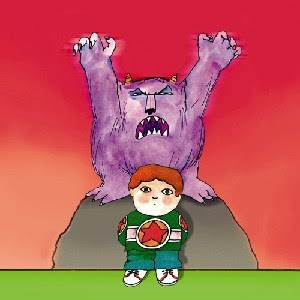
- polite perserverance is also key i.e a follow up phone call perhaps 3 months after you've sent in your work is a good thing
Author and illustrator Liz Pichon was also there. She's written books such as 'Bored Bill' and 'The Ugly Bug'. She seems to write about animals more because apparently she's not great at drawing children... lulz. Regardless of that i've always liked her style of illustration and i looked a lot at her work last year for my exam project.

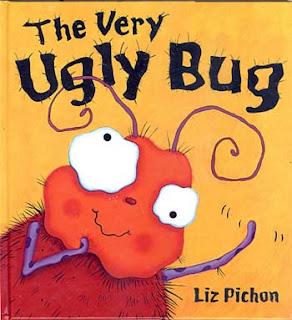
She studied graphic design and said this was more helpful than purely studying illustration as she was more aware of the layout of books, typography and the like.
Liz recommended getting an agent but when initially sending in work to publishers just send them a rought outline rather than finished artefacts of a new book as a lot tends to change.
Representing the agents was Penny Holroyde who works for the Caroline Sheldon Literary Agency.
The thing she kept coming back to was how important it was to read, revise and research. They were the key things in succeeding in getting published and getting work. She mentioned that the common trends of the moment were series fiction and the industry were lacking in more books for boys aged 7-9, like 'Dirty Bertie'

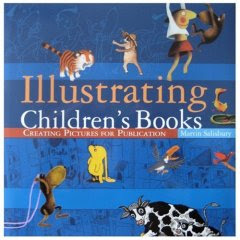
A book by Martin Salisbury was also recommended called
Illustrating Children's Books which i have ordered from
everyone's favourite shopping site as we speak.
Penny also said to think about transitional books. Many
children go from reading the wonderfully colourful picture
books, into books containing much denser text.
More research into publishers would include looking at the publishers catalogue to see what books they've done, again
making sure you're sending your work to the right place.
Another helpful hint was when to send your work out to
publishers. Apparently not after christmas and not in the March/April months, as this is just after the Bologna Children's Book Fair happens, the best time to send work out is the July period.
Penny also said that if you are just looking for illustration work, pick a scene from a story or fairy tale and illustrate it in your own style. All helpful for building up a portfolio. With the portfolio make sure there are drawings of children in there too, which seems like a pretty silly thing not to do, but apparently many illustrators dont or can't draw kids!
Other brief notes include:
- make sure everything is mounted and presented well
- cover letter is of the utmost importance, and to give it some character and personality
- stick to what you are good at rather than what you think you should do
- stick to one style of illustration rather than varying as it gives you a stronger brand and makes you more memorable.
The second talk was more about marketing yourself, which was stuff we already know, or are supposed to anyway, but still nice to have it reiterated. Online presence is so important and actually having a blog is sometimes better than a website if you're an illustrator. Readers and viewers like to interact and comment, leading to the lovely word "intercreativity"
Was also pointed out to get involved with stuff like festivals and fairs, send stuff to local papers, get publicity material and get involved with libraries.
All in all, a really good day with some excellent points raised. I felt very reassured from the whole thing, even tho it is a difficult and competitive industry, its not an impossible one.
Thursday 17 April 2008
linkages and such
Had a conversation with her about my idea too, which is going more in the animation direction. I'm liking the style of an old alphabet poster, but with the words as they would appear garbled in predictive text. I'm thinking of animating the text to appear as they're being written, and constantly changing. If all goes well and i have time it also allows space for any other smaller animations. Karen also suggested music as well so thinking about that i reckon that calming, relaxing sort of music would work well in contrasting against the frustration and disorientation of the text.
firefox appears to be randomly deleting my bookmarks, but i found a couple that are pertinent to my essay. It's about the psychology of cyberspace and although i haven't read it all, its very interesting and i know a few of you are looking at identity and what not online.
Deviance in Online Communities
Psychology of Cyberspace
Have also been getting into Second Life more, purely for research purposes because i still hate it. As my essay is looking at the grotesque i wondered what sort of reaction i'd get with 2 completely different avatars,
one that was aesthetically attractive, more clichéd; the perfect. The second was an avatar that combined the main features of what is considered unattractive: the grotesque. It was interesting to note the different responses each avatar received. The grotesque avatar seemed to generate more chat and get more attention, and perhaps this is where the secret lies, in that its an easy way to get attention with very little effort. It is indeed strange to think that in a virtual world of easy beauty that many users design themselves as 'ugly'
on a side note, programming lesson from mike. yeah... i'm not gonna be doing that.
Monday 14 April 2008
'Hell is other people talking webspeak on mobile phones.'
According to cultural critic Umberto Eco (2002), we live in an age where the diminutive, the brief and the simple are highly prized in communication; if this is the case, then there's little doubt that text-messaging embodies this zeitgeist.
Like many earlier communication technologies, however, the mobile phone has come to evoke and/or embody a range of projected fears and hopes (cf. Turkle, 1995).
[Text-]messages often bear more resemblance to code than to standard language. A text filled with code language expressions is not necessarily accessible to an outsider. The unique writing style provides opportunities for creativity. (Kasesniemi & Rautiainen, 2002: 183 - emphasis ours).
we believe that humour helps to fulfil the generally phatic (cf. Malinowski, 1923) function of text-messaging by which an almost steady flow of banter is used in order to maintain an atmosphere of intimacy and perpetual social contact. In this sense, text-messaging is small-talk par excellence - none of which is to say that it is either peripheral or unimportant (see Coupland, 2000).
and yes, since my last post i did get a text joke about mark speight's suicide.. and i laughed, im a bad person;
"Police are investigating the bigger picture of Mark Speight's death. It was sent in by 11 year old Susie from Reading."
more research for exam project
funny video from Armstrong and Miller about predictive text swearing, quite good, very similar to the history of the F word though.
The more i think about the 'dyslexic machine' the more i like the idea... no more jokes like a dyslexic pimp bought a warehouse, and the dyslexic sold his soul to santa. Not that they bother me, mainly because i don't get them at first, but they're so overused. I get the same text jokes practically every month, only changing when a celebrity dies. No text jokes on kids presenter Mark Speight as yet, though the day is young. But i digress, i think my point is that so many people are reliant on these machines and see them as perfect. Many write a text message and send it, relying on predictive text without checking it properly first. Only today i got a text from a good friend, who is very bright and normally very good at spelling. It said "i'm really bored, i foot want to be here".. i think it was supposed to say 'don't'... so perhaps these machines are making us dumber, or careless. I'm quite pedantic with text messages, and i will use punctuation and don't get me started on the subject of text talk. It seems i'm not alone with the hatred for text speak. So many forum rules are "no flaming, no text speak" it confuses people, they want the message instantly without having to decode or work out what is being said.
example text from my 13 year old neice "hiya, wot u up 2 u cmin ova l8r :D tk sn, tb bri xxx" i still have no idea what that says, so i rang her. A few extra letters in that and it would have saved me the effort.
anyway, i'm trying to be clever with no real point. Just posting my thoughts and research as and when i find them, helping me hone my idea more. Anyway, here's some links that i found.
- Predictive text creating secret teen language
- Misspellings on eBay can pay
- Predictive, yet unpredictable
oh there was also a fairly interesting article in a sunday paper supplement which i may scan and post at some point. It was just a filler really on the evils of online social networks, but useful for my essay.
Sunday 13 April 2008
exam project
I've always been interested in the theory of parody and pastiche so i'm thinking of combining that with the above idea. A big inspiration to me has been the Comic Strip films, short films that are almost complete pastiches. If you can check out the films "5 go mad in dorset" or "5 go mad on mescaline" which are piss takes of the enid blyton books where everything are jolly good wheezes what ho. plus they're really funny. watch them if you can.
so yeah, kind of torn between doing an animation or illustration (or be ambitious and do both)
for animation i've had ideas about chain emails and text messages. Those really annoying jokes that aren't funny but you have to pass on to 15 people in 2 minutes or your eyes will fall out and your buttocks will explode. Its strange to think that years and years ago, chain letters from your postie would freak people out and technology has made things faster and easier, but chain emails have become all the more popular and annoying. Its hard to put what i'm thinking into articulate words, but i know what i mean.
As for the illustration idea, you know those alphabet posters? Think of one of those, but put into predictive text the words have changed. So a B for bed would be the image, but the word would be bee, or something similar.
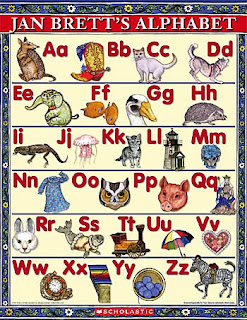
Pretty pleased with this idea (thanks to a certain tutor) but am going to go through our old manovich essays and fine tune my idea to write the brief.
dissertation stuff
anyway, so i'll talk first about my dissertation. It been based around the design of the grotesque for a while now, with main referencing to The Young Ones
Not really that grotesque in terms of appearance but my essay was looking more at their personalities, interaction and their context within an 80's Thatcherite society. After a long and at first confusing talk with Micheál he pointed out that its not enough just to talk about television, especially something thats over 20 years old. He suggested that i look at online socialising and the avatars as well. I hate it when he's right.
so i had a think and did some research and the essay is still sticking with the theme of the grotesque but looking at online avatars as well. Its interesting to look at how users either make perfect versions of themselves, or become exaggerated grotesques. You just have to stroll a while in Second Life to either see 6 foot blonde babes or monsterous creations.

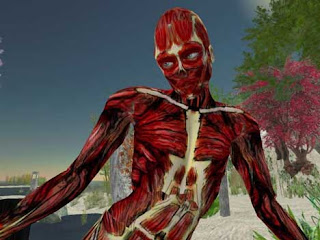
What's even more confusing is that some people combine both.. sexy monsters? That's something i haven't even started thinking about yet!
According to Sherry Turkle the computer has become less of a tool and more of a mirror in that we are ‘able to step through the looking glass’. We can live in virtual worlds, play and socialise. However the mirror analogy though relevant, is slightly redundant, in that now due to the age of the avatar and increasing popularity of sims, second life and world of warcraft to name but a few, we can change our appearance and change how others see us. The anonymity of the internet has huge allowances for escapism in that the user can be whatever and whoever they want.
